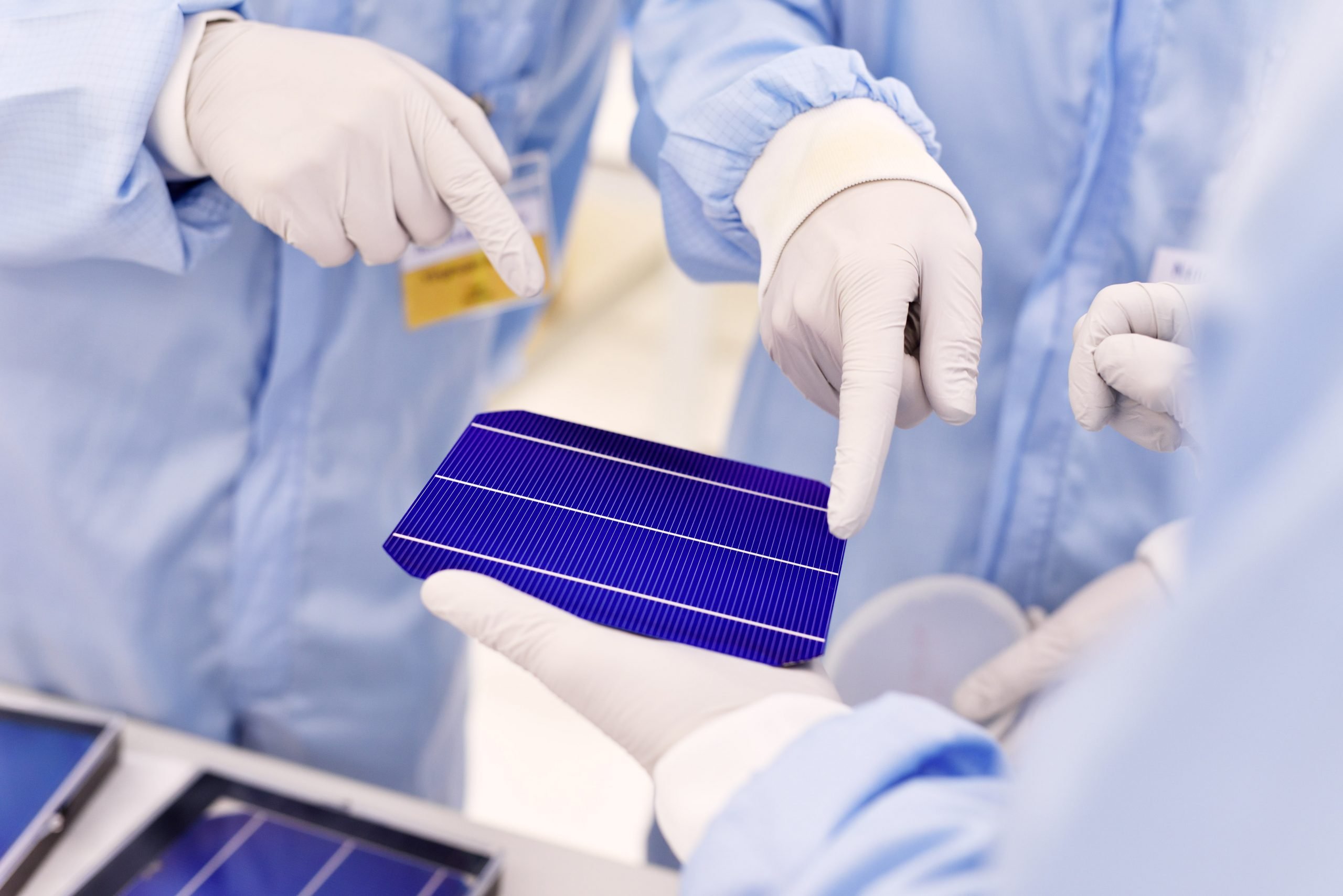
You cannot see it, but all the components of your smartphone are made up of a multitude of thin layers. Take microchips, for example, which contain billions of transistors. Only very precise manufacturing techniques, such as atomic layer deposition (ALD), can fabricate these minuscule components. An upgrade is needed in order to be able to use this technique to make e.g. screens or batteries.
Together with numerous companies, researchers from Eindhoven University of Technology (TU/e ) Bart Macco and Erwin Kessels, want to take this manufacturing technique to the next level. They received a grant of over €600,000 from the Open Technology Program of the Dutch Research Council (NWO) for this purpose. Together with Dutch companies such as Levitech, SoLayTec, SALD, Smit Thermal Solutions, VDL ETG, TNO, and SALDtech, the researchers will work on the fundamental issues of what is known as Spatial ALD.
Controlled growth
“ALD makes it possible to build up layers in a controlled fashion, atomic layer by atomic layer,” says Macco. That growth usually takes place in a closed chamber under vacuum. The surface of a carrier material reacts with a gas. As a result, some gas particles bind themselves to the surface. Non-bound gas particles are then removed. Then another gas is added, which also binds to the surface. This creates a layer of the material that is required. The layer builds up by repeating these steps. “It’s a relatively slow technique, suitable for small areas where production speed is not a decisive factor,” Macco explains, “If you don’t have to add the gases one by one each time, it can be done much faster.” That is what Spatial ALD entails. “To put it simply, you build up layers by having the carrier material move through zones of different gases that are continuously flowing.”
ALD is not new. Kessels was already working on the technique together with two PhD students as a young researcher back in 2003. Now he is a professor and leader of the Plasma & Materials Processing research group, where he first started out in 2003.
“Ten years ago, the Brainport region already picked up Spatial ALD. With the TNO research organization as the pioneer and many fairly small companies that have subsequently started working with the concept. All of them focused on a particular market. One wants to develop batteries, another wants to design displays and yet another wants to work on solar cells.” Kessels is also aware that there is a lot of interest from end users.
‘Trial and error’
“Battery companies or companies that develop displays, for example, want to know if it also works on porous 3D material or on flexible films. Or whether you can combine materials, or make new materials. The ALD companies often don’t have all the answers. They find out through trial and error if it works or not. It is much more impressive if they can show that it works through their work with the university. And most of all, how it works.”
There won’t be immediate answers to all questions, Kessels goes on to say, “but it does inspire confidence if you have conducted experiments and perhaps have even already written an article about it. In the past, there were projects that involved companies, TNO and TU/e, but never in a way that allowed us to delve deeper into the material. “We can now form that critical mass so that we can ultimately properly figure out how it works.”
In doing so, the researchers aim to provide a wide range of materials for new applications. Says Kessels, “It’s really nice to have a project like this, so you can really dig in and achieve more innovation over a number of years. We often talk about innovation and we think it pretty much happens on its own. Innovation with companies takes a long time. Most of the time, it doesn’t go any further than the intention to work together, people still end up going back the day-to-day grind.”
Relevant issues
Macco and Kessels are currently looking for a PhD student and a post-doc to carry out the research. Kessels mentions that the university has laboratories where researchers can find answers to relevant questions from real-world situations. There is often a discrepancy between what scientists think the issues are and what the real issues are, according to Kessels: “Great idea, but that’s not going to be it.”
Macco believes that this wide-ranging ALD project is primarily an exchange: “Together with TNO, we are building on more well-founded knowledge, and those companies can offer reliable solutions to their customers as a result.” The university does not currently have a machine to perform spatial ALD, Macco says. “As part of the project, we are getting a machine from one of our partners, SALD, that we can use to do the research.”
Ultimately, Kessels expects this project to bear a lot of fruit. “It’s always hard to predict, but I predict that in ten years we will say, ‘See, this has now been the impact.’ If ALD also ultimately does a very good job on porous 3D materials or larger surfaces, we will soon have, for example, batteries or displays with ALD layers in them. This in turn opens up new possibilities that we cannot foresee at the moment. When it came to the old Nokia phones, we also had no idea what smartphones would bring us.”

